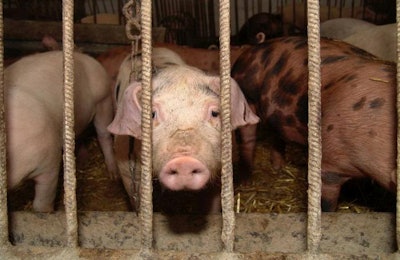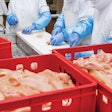
From WATTAgNet:
The past week’s top stories from WATTAgNet included information about porcine epidemic diarrhea (PED) virus, poultry production and feed formulation.
- USDA: Reused tote bags likely cause of PEDv entry into US: The U.S. Department of Agriculture’s root cause investigation found that the reuse of contaminated flexible intermediate bulk containers most likely caused the entry of swine enteric coronavirus disease (SECD) viruses – including porcine epidemic diarrhea (PED) virus and swine delta coronavirus – into the United States.
- Infographic: 6 myths about poultry production: This infographic busts misconceptions about antibiotics in poultry production, litter as a waste product, chicken growth and more.
- Feed formulation: health, nutrients, and ingredients in balance: Quite often, 'sensitive' formulas are over-fortified with nutrients and ingredients, let alone additives, which make them not only very expensive, but also ineffective.
- LED bulbs can save money for poultry growers: A recap of WATT Global Media’s first poultry grower webinar, 'Broiler house nighttime ventilation & LED Lighting,' sponsored by Choretime Inc.
- Managing built-up litter between broiler flocks: A recap of WATT Global Media’s Poultry Grower Webinar, “Litter management between flocks & grass bedding webinar,” sponsored by Jones Hamilton.
USDA: Reused tote bags likely cause of PEDv entry into US
The USDA's Animal and Plant Health Inspection Service (APHIS) has released a root cause investigation report outlining potential scenarios for how the swine enteric coronavirus disease (SECD) viruses entered the United States.
Infographic: 6 myths about poultry production
View this infographic busting misconceptions about antibiotics in poultry production, litter as a waste product, chicken growth and more.
Feed formulation: health, nutrients, and ingredients in balance
An expensive formula for young animals is not necessarily a suitable one. Quite often, such "sensitive" formulas are over-fortified with nutrients and ingredients, let alone additives, which make them not only very expensive, but also ineffective.
LED bulbs can save money for poultry growers
Energy-saving bulbs can have attractive paybacks for poultry growers as long as you chose one that will hold up in a poultry house and you have the right kind of dimmer for the bulb. Dr. Brian Fairchild, professor, poultry science, University of Georgia, said that they first thing your poultry house lighting system must provide is uniformity.
Managing built-up litter between broiler flocks
Litter reuse in U.S. has become a common industry practice as high quality affordable bedding materials have become harder to find, phosphorous-based nutrient management plans have been implemented, and well-managed dry built-up litter systems have been shown to not hurt bird performance.















